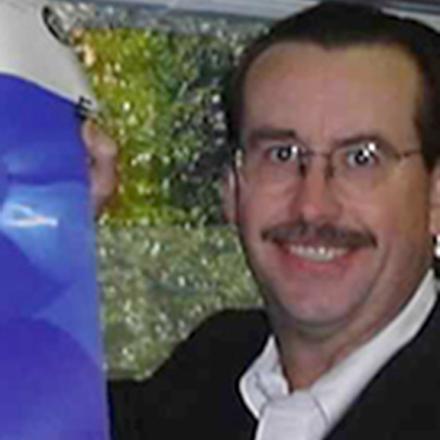Chris St. Cyr

Chris St. Cyr is an affiliate scientist in the High Altitude Observatory for the National Center for Atmospheric Research. He is currently a scientist at the USRA (Universities Space Research Association).
Chris is also a NASA visiting Principal Scientist following his recent retirement after many decades of work at NASA.
Dr. St. Cyr was an early proponent of applying space weather research to improve forecasting and mitigation effects of space weather on the geospace environment. He is internationally recognized for his space weather work and for his research on the dynamics and impacts of Coronal Mass Ejections (CMEs). He remains involved in developing space weather forecasting techniques and has worked on quantifying the economic impacts of space weather on the power grid and various other policy topics associated with heliophysics. He is actively working with HAO staff, using HAO/NCAR Mauna Loa Solar Observatory (MLSO) data and NASA in-situ solar wind observations to study CME dynamics and their interactions with surrounding coronal and solar wind structures to better understand the processes and conditions that produce Solar Energetic Particle (SEPs) events. SEPs can disrupt communications and they pose a direct threat to astronauts, high latitude/altitude aircraft crews, and satellites. Dr. St. Cyr has worked with MLSO observations for many decades and remains active in his involvement with the data and with HAO staff, including Joan Burkepile, Alice Lecinski, Mike Galloy, Sarah Gibson, and Steve Tomczyk. He is currently working with HAO and with staff at the El Leoncito CASLEO observatory in Argentina to investigate the possibility of installing an HAO coronagraph to their site and for deploying site survey equipment for a future COSMO observatory. He was heavily involved in the collaboration between NASA Goddard Space Flight Center and HAO in the development and deployment of near real-time CME detection code currently running at MLSO. He has numerous publications using MLSO and NASA mission observations. He is second author on a HAO-led Helio2050 white paper highlighting the improvements to SEP early- warning systems through the use of near real-time observations of: 1) CMEs in the low corona; 2) solar energetic electrons; 3) low frequency radio emissions; and 4) short channel X-ray data.
Prior to his recent retirement from NASA, Dr. St. Cyr was the U.S. Project Scientist for the ESA/NASA Solar Orbiter mission. Preceding that, he was the Senior Project Scientist for the NASA Living With a Star Program (LWS). He played a major role in working with NASA Headquarters and the Heliophysics community in the development and evolution of the LWS program. He also served as Acting Project Scientist for the NASA Solar Dynamics Observatory (SDO) during its development phase and was the Deputy Project Scientist for the NASA STEREO mission. He has significant experience in developing and operating scientific instruments on space-based platforms. He has extensive experience in analyzing remote sensing observations of the solar corona and heliosphere.
Dr. St. Cyr has made numerous trips to HAO/NCAR over the years to work with HAO staff on observational studies of solar activity, with his last visit taking place in September 2019. The support provided by HAO during an Affiliate Scientist appointment will allow him to continue his frequent visits to directly engage with HAO staff on CME-SEP research and to make use of new Mauna Loa UCoMP observations available in early 2021 for CME-SEP studies.